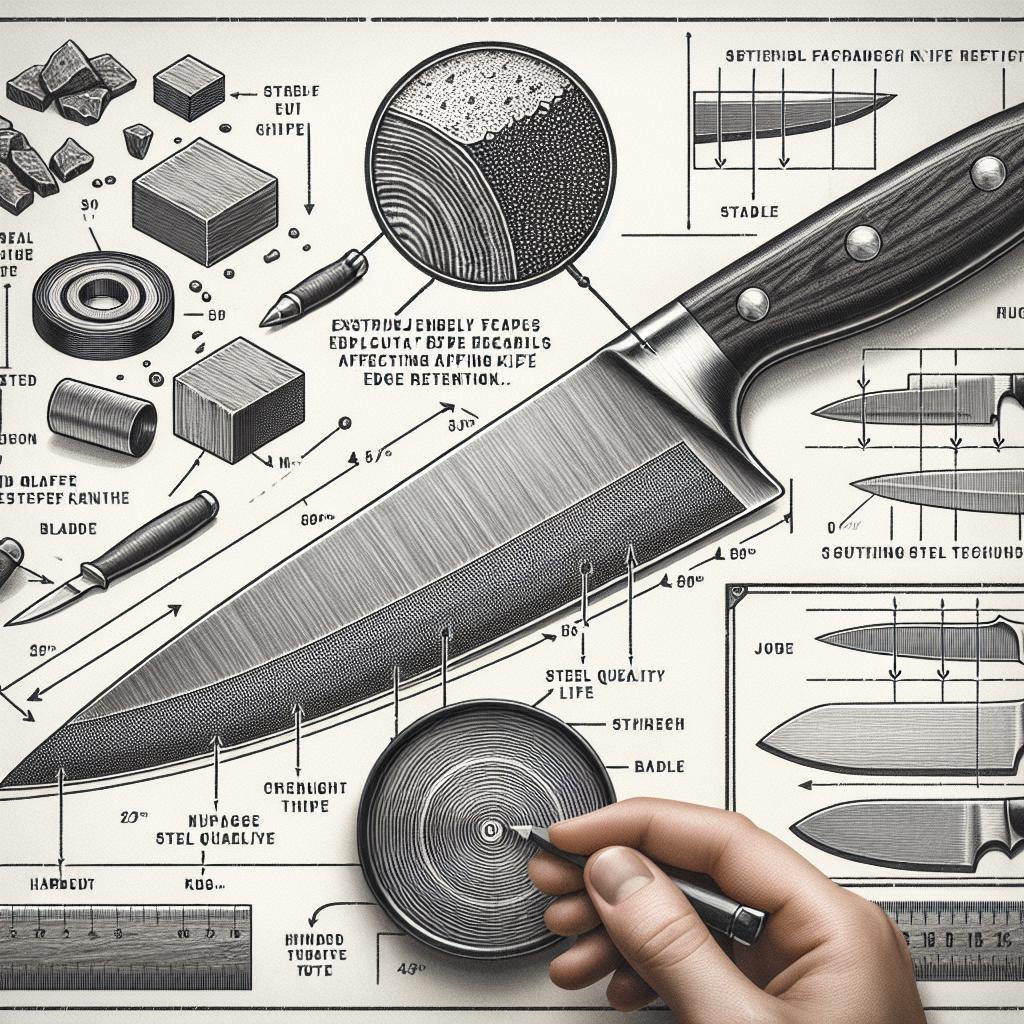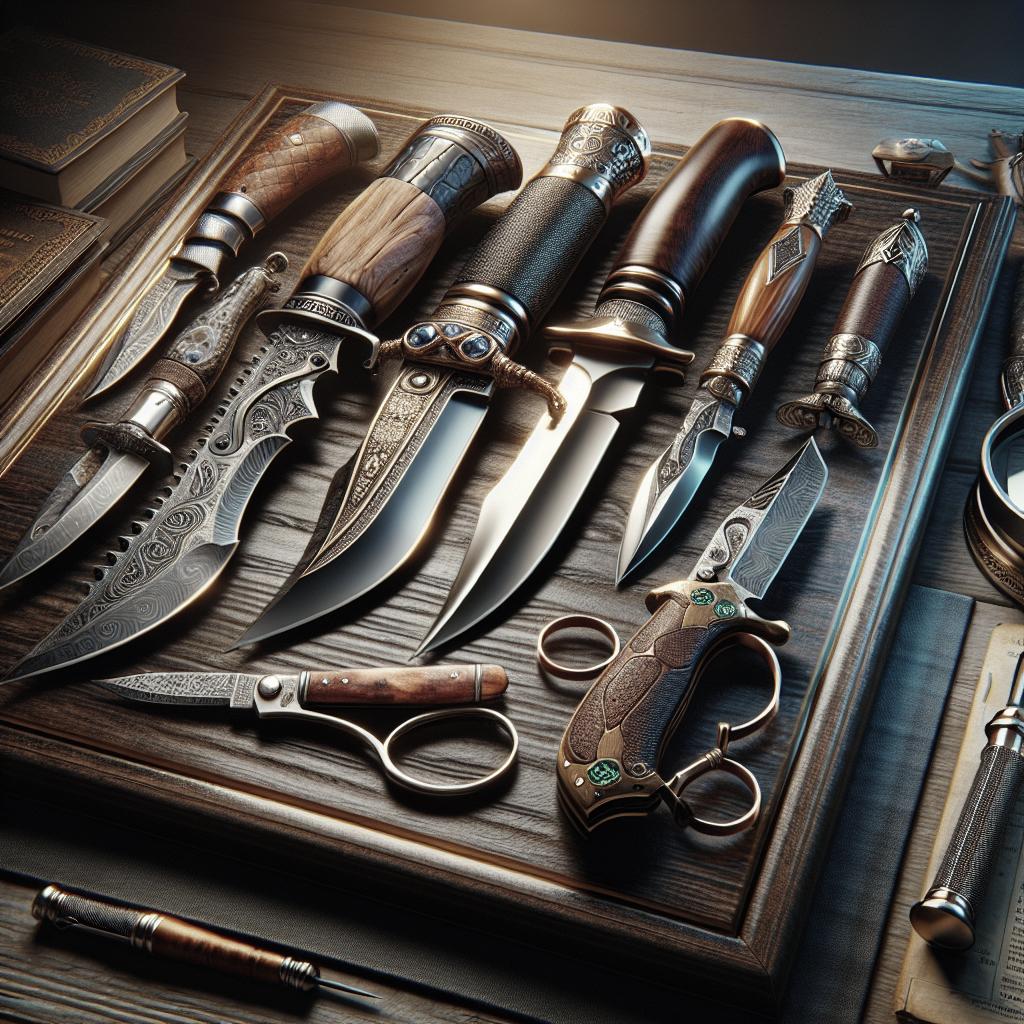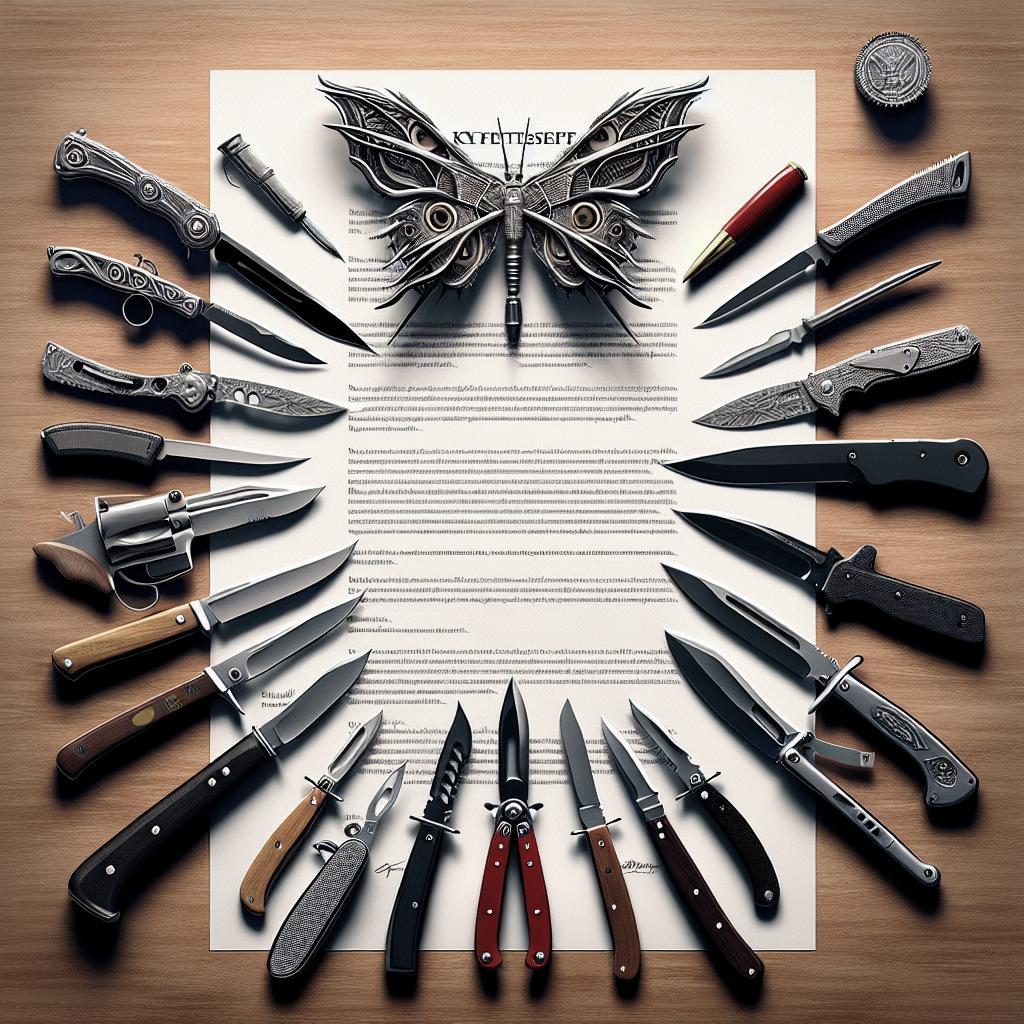Understanding Knife Edge Retention Factors
In the world of cutlery, knife edge retention is a critical factor for chefs, knife enthusiasts, and everyday users alike. Understanding the factors that contribute to how long a knife maintains its sharpness can enhance performance and longevity. This article delves into key aspects influencing edge retention, including steel hardness, sharpening techniques, and cutting surfaces. It also draws insights from experiments and offers maintenance tips for preserving sharpness. Learn how to implement best practices and techniques that keep your knives in optimal condition, ensuring they serve you well for years to come.
Steel Hardness and Edge Retention
The hardness of the steel used in a knife blade is a fundamental element affecting its edge retention. Hardness is measured on the Rockwell Scale, with harder steels typically indicating better resistance to wear and longer retention of a sharp edge. However, it’s essential to find a balance as overly hard steels can be brittle and prone to chipping under stress.
Different steel alloys offer varying levels of hardness and thus different performance characteristics. Some high-carbon stainless steels are celebrated for their ability to hold a keen edge longer under rigorous use, making them favorites among professionals. This property can be attributed to the grain structure and the ability to form strong carbides that contribute to edge stability.
Relationship between Steel Hardness and Edge Retention
The relationship between steel hardness and edge retention is not always linear. While a harder blade retains its edge longer, it can become challenging to sharpen and more susceptible to chipping. Many users find that a moderately hard steel provides the best balance between edge retention and maintainability.
Knife manufacturers often tout proprietary steel blends that incorporate elements like vanadium, molybdenum, or tungsten to enhance both hardness and toughness. Understanding these compositions can guide buyers when selecting a knife that fits their specific use case, emphasizing the real-world performance needs beyond just looking at hardness ratings.
Sharpening Techniques for Prolonged Edge Retention
How a knife is sharpened significantly impacts its edge retention. Employing proper sharpening techniques preserves the geometry of the edge and maintains the blade’s ability to cut effortlessly. Regular and correct sharpening can extend the intervals between full overhauls, reducing metal loss and maintaining thickness near the edge.
Different sharpening methods, such as using whetstones, diamond stones, or honing rods, achieve varying results. Selecting the appropriate angle and grit for how a knife is used is crucial. A thinner, sharper angle is ideal for precision, whereas a slightly obtuse angle is better suited for heavy-duty use to prevent rapid dulling.
Cutting Surfaces and Their Influence
The surfaces on which knives are used play a substantial role in blade longevity. Hard surfaces, like glass or stone cutting boards, are notorious for speeding up edge wear. Opting for softer surfaces, such as wooden or plastic boards, can dramatically extend edge life.
Ample consideration should also be given to how one uses the board—a gentle, slicing motion in a controlled environment versus aggressive chopping on a suboptimal surface can make a marked difference in edge durability, ultimately impacting the time between required sharpening sessions.
Surface Friction and Edge Wear
Surface friction is another factor that dictates how quickly a knife edge wears down. Materials that produce high friction during cutting can accelerate dulling. When choosing cutting boards, those that minimize friction without being too malleable should be preferred to balance edge retention and board longevity.
Adopting a mindful approach to how knives are wielded on surfaces, emphasizing finesse over force, will benefit edge retention irrespective of the material. Understanding that the tool and the corresponding cutting surface should be compatible encourages prolonged sharpness.
Best Practices for Preserving Knife Edges
Ensuring the longevity of a knife edge involves implementing various best practices. This includes minimizing contact with acidic substances and heavy impacts that can deteriorate the edge over time. Moreover, reserving specific knives for their intended purposes extends their lifecycle.
Practices such as honing regularly to align the edge, limiting dishwasher usage, and ensuring knives are always cleaned promptly and thoroughly after use can also enhance edge retention. Users who follow these practices typically report longer intervals between sharpening.
Insights from Edge Retention Experiments
Empirical studies on knife edge retention provide valuable insights into the durability and effectiveness of different knife types under various conditions. Tests often simulate extended use to measure how quickly edges dull. They take into account facets like angle retention, alloy composition, and surface friction.
The results from such experiments often show that while high-end materials and constructions generally favor better retention, user habits and maintenance are equally influential. Detailed experimentation links these factors together, offering a comprehensive understanding of how to best care for knives.
Tips for Maintaining Long-Lasting Sharpness
A. Proper Storage Practices
Proper storage practices are crucial for maintaining sharpness. Storing knives in dedicated wooden blocks, magnetic strips, or protectively slotted rolls prevents unnecessary contact. Avoiding drawers where they are jostled can prevent micro-damage to edges.
Storing knives appropriately also means keeping them out of environments that expose them to moisture or corrosive elements. Ensuring dry, closed conditions reduces the risk of blade degradation, contributing to their lasting sharpness.
B. Cleaning and Drying Techniques
Cleaning and drying are paramount in edge retention. Knives should be hand washed and promptly dried to prevent rust and corrosion that dull blades over time. High-carbon steel knives, in particular, are vulnerable to oxidation if left wet, making immediate drying crucial.
Using neutral pH cleaning agents and soft cloths to wipe down blades keeps chemical abrasion at bay. These seemingly small steps make a significant difference in preventing surface wear and promoting the longevity of sharp knife edges.
Final Thoughts
The journey to mastering edge retention is as much about understanding the science of materials and usage as it is about cultivating practical habits. As knife users gauge both the tangible and nuanced factors that impact edge life, the collective lessons learned reinforce the merit of meticulous maintenance and informed usage.
The exploration of knife steels, testing variables, and effective practices encourages a proactive approach, enabling users to prolong the useful life of their tools while maximizing performance. Adopting these insights will allow both enthusiasts and professional users to make more educated decisions that benefit their culinary or crafting adventures.
| Category | Key Insights |
|---|---|
| Steel Hardness | A balance is required; harder steels may chip, while softer steels may dull faster. |
| Sharpening Techniques | Correct angle and method preserve edge sharpness longer. |
| Cutting Surfaces | Softer materials like wood reduce edge wear compared to glass or stone. |
| Surface Friction | Minimized friction helps maintain edge integrity. |
| Preservation Practices | Regular honing and proper cleaning techniques extend edge life. |
| Storage | Dedicated storage solutions prevent edge damage. |


